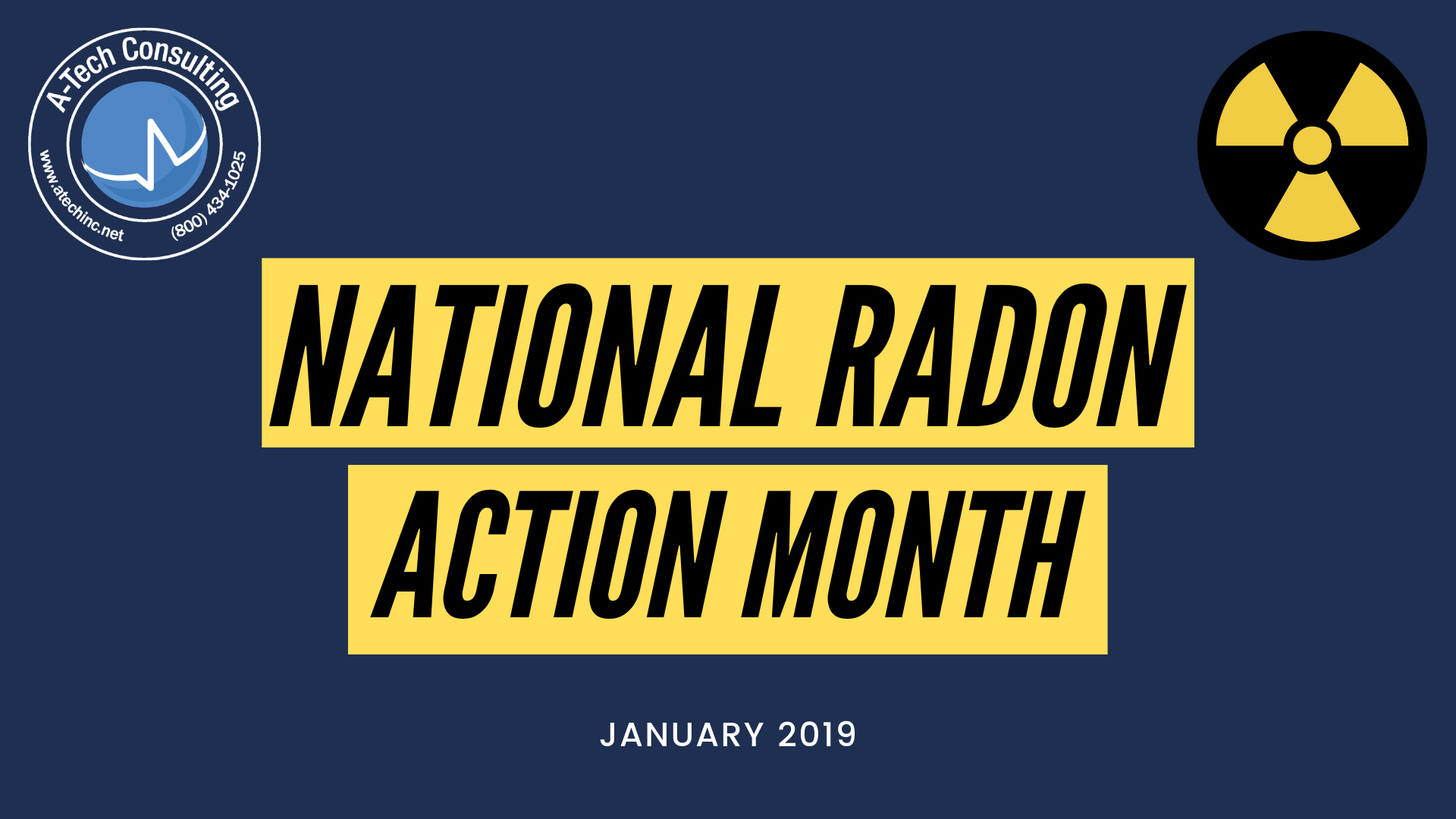
Radon, known as the silent killer, is the second leading cause of lung cancer in the U.S. You can’t see it, smell it or taste it, but it claims over 20,000 lives each year. If your home has high radon levels, you’re at risk for developing lung cancer.
By naming January as National Radon Action Month, the US Environmental Protection Agency (EPA) is creating awareness of the hazard of radon gas in indoor environments. It’s easy to forget about something that you don’t see, smell or taste – but it can be a serious problem if there is radon exposure over a long period of time in your home.
What is Radon?
Radon is a radioactive gas, produced from a natural breakdown of uranium in soil, rock and water. Radon gas seeps up from the ground, escaping to the earth’s surface and disperses into the air, so very low levels of radon gas are found in the air we breathe on a daily basis.
What is a safe level of Radon?
No level of radon exposure is completely safe. However, the US EPA has set an action level of 4 pCi/L (picocuries per liter). At or above this level, the EPA recommends to take corrective and protective measures to reduce exposure to radon gas.
Keep in mind that the lower levels of radon aren’t too great a cause for concern, as we all breathe it in every day. However, the serious health hazards are when there are areas – such as your home or building – that has inadequate ventilation, which then increases the levels and the risk of developing lung cancer.
How to Protect Yourself
Testing is the only way to determine how much radon is present in your home or drinking water. Short-term and long-term test kits are available or you can hire a professional to assess your building and provide recommendations.
Keep in mind that the serious effects are from exposure to high levels over a long period of time. The safest course of action is to test for radon and then decide on what steps to take. One professional handyman solved his problem but clearing out vents for better ventilation. “I created a radon problem when I insulated my crawl space and blocked some vents. Moving some insulation was all it took to clear up our problem. My advice is to try the simple solutions first.” (https://www.familyhandyman.com/smart-homeowner/home-safety-tips/what-is-radon/view-all/)
Contact us to learn more
Are you concerned about radon in your home or workplace? Contact us for more information about our radon testing services or to schedule an appointment for your home or workplace.



